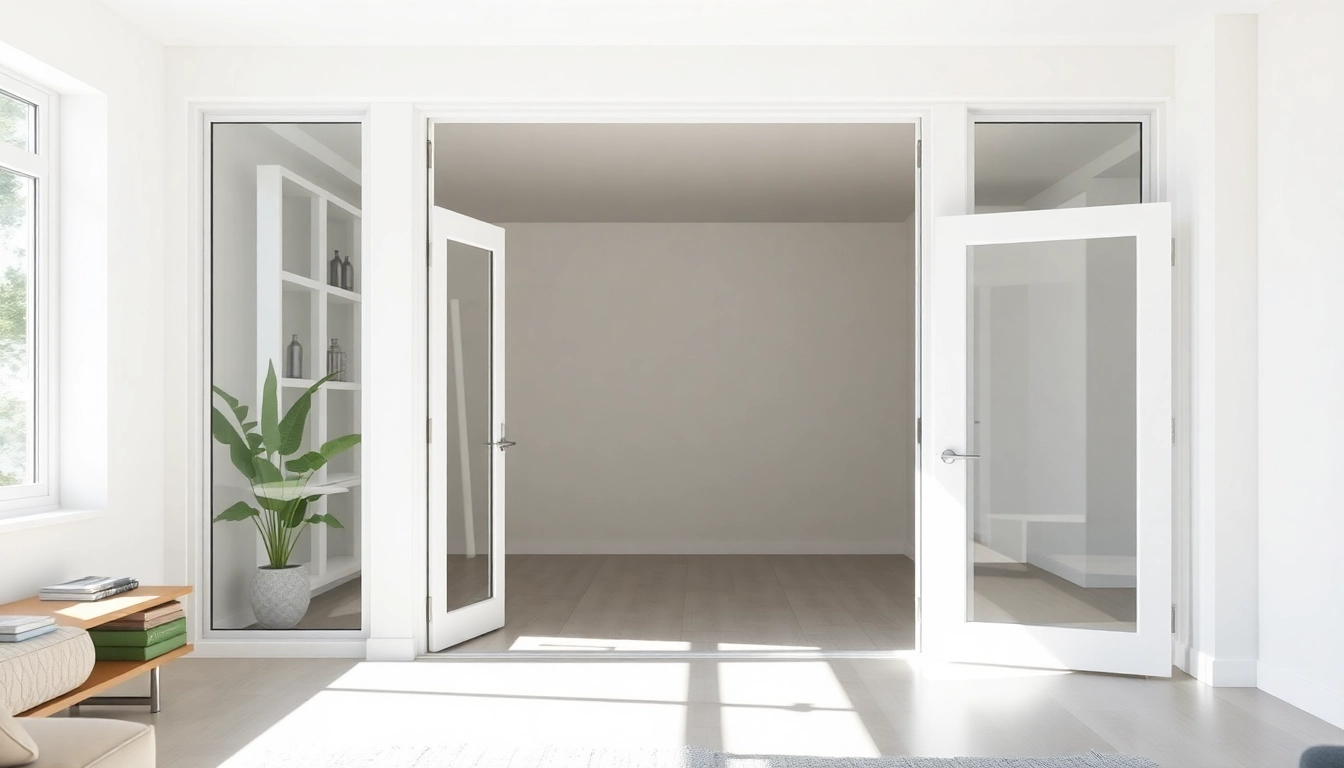Replacing windows and doors can transform a home’s energy efficiency, comfort, and value. It’s not just about aesthetics; proper replacement tackles air leakage, insulation, and glazing performance, delivering measurable gains over time.
For strategic guidance and industry-ready solutions, explore window and door replacement options.
Understanding Window and Door Replacement Basics
Definition and Scope of Window and Door Replacement
Window and door replacement involves removing existing units and installing new ones that fit the same openings or calibrated frames. It focuses on performance improvements—air sealing, glazing upgrades, and frame material changes—without a full room-by-room remodel. Proper replacement can address drafts, condensation, and security concerns while preserving the home’s architectural integrity.
Common Materials and Styles for Windows and Doors
Materials range from vinyl and fiberglass to wood and aluminum. Vinyl and fiberglass offer low maintenance and strong thermal performance, while wood provides timeless aesthetics with higher upkeep. Popular window styles include double-hung, casement, sliding, and fixed/picture designs; door choices span entry, patio, French, and sliding configurations. Each combination affects energy performance, maintenance needs, and curb appeal.
Timeline: Planning through Installation
A typical project unfolds in stages: assessment and design, precise measuring and quotes, product ordering, production lead time, and installation. Weather and supply chain factors can add days or weeks. Planning for a small project (a few openings) may take 4–6 weeks from assessment to finish, while larger homes require a longer horizon with staged installations.
Planning Your Window and Door Replacement Project
Budgeting and ROI for Window and Door Replacement
Budgeting should consider product cost, installation labor, and potential rebates or incentives. ROI comes from ongoing energy savings, reduced maintenance, and enhanced resale value. A well-chosen, energy-efficient package often pays back through lower utility bills and improved comfort, especially in climates with extreme temperatures.
Measuring, Quotes, and Site Prep
Accurate measurements are critical: record width and height at multiple points of each opening, note any irregularities, and document obstacles like trim or molding. Gather several quotes that itemize removal, disposal, flashing, and sealing. On site, protect furnishings, cover floors, and clear access for installers to exterior walls and electrical/trim areas.
Permits and Selecting Contractors
Some jurisdictions require permits for structural changes or significant alterations to openings. Verify contractor licensing, insurance, and workmanship warranties. Request references and a written contract detailing scope, schedule, and warranties to minimize disputes and ensure accountability.
Choosing Styles, Materials, and Energy-Efficient Window Replacement Solutions
Styles Overview for Windows and Doors
Windows come in single-hung, double-hung, casement, awning, sliding, and picture formats, each offering different ventilation and cleaning considerations. Doors range from traditional entry doors to contemporary patio and French doors. When selecting styles, balance proportion with the façade, interior lighting, and security needs to achieve a cohesive look and feel.
Materials Comparison: Vinyl, Wood, Aluminum
Vinyl is cost-effective and maintenance-light, with strong resistance to warping. Wood delivers premium aesthetics and exceptional finish customization but requires regular sealing or painting. Aluminum frames are slim and durable, often paired with insulating cores in high-end products. Fiberglass blends durability with stable performance and modest upkeep. The best choice depends on climate, design, budget, and maintenance willingness.
Energy Ratings and Codes in Window Replacement
Performance is often expressed through U-values (heat transfer), solar heat gain coefficient (SHGC), and air infiltration ratings. NFRC labeling and Energy Star certification guide comparisons. Building codes and local incentives increasingly favor high-performance units, rewarding reduced energy use and improved indoor comfort.
Installation Process and Quality Assurance for Replacement Windows and Doors
Professional Installation vs DIY for Replacement Windows and Doors
Professional installation delivers consistent results, proper flashing and weather sealing, and warranty protection. DIY can be feasible for small, straightforward projects but often lacks the precision required for air-tight seals and moisture management. Incorrect installation can lead to leaks, reduced performance, and voided warranties.
Step-by-Step Installation Process
Installations typically follow these steps: remove the existing unit and assess the rough opening; prepare the opening and install a moisture barrier; insert the new unit with shims for plumb and level; apply flashing and sealants to prevent water intrusion; insulate gaps; reinstall trim and finalize glazing; test operation and seal integrity; and perform a final cleanup and inspection.
Warranty, Service, and Quality Assurance
Expect product warranties covering materials and workmanship, typically with separate terms for installation labor. Document serial numbers, keep maintenance records, and schedule periodic inspections to address seal failures or hardware wear early. Clear communication with the contractor ensures timely service when issues arise.
Maximizing Value: Maintenance, Metrics, and Post-Project Window and Door Replacement ROI
Maintenance Tips to Extend Window Replacement Lifespan
Perform seasonal checks: inspect seals and caulk, clean tracks, lubricate hinges and locks, and wash glass to maintain clarity. Re-seal exterior frames as needed, repaint or re-stain wood frames periodically, and address any condensation or moisture intrusion promptly to prevent framing damage.
Performance Metrics: U-Value, SHGC, Air Infiltration
Monitor improvements by comparing pre- and post-installation energy use, paying attention to heating and cooling loads. A lower U-value and appropriately tuned SHGC align with climate goals. Reduced air infiltration translates to steadier indoor temperatures and improved comfort year-round.
Case Studies: ROI from Window and Door Replacement
Consider a mid-size home in a temperate climate upgrading to double-paned, low-emissivity units with tight seals. Over five to seven years, utility bills may drop noticeably, maintenance costs decrease, and property value can increase. While results vary by locality and product choice, long-term savings and enhanced curb appeal commonly justify the initial investment.
